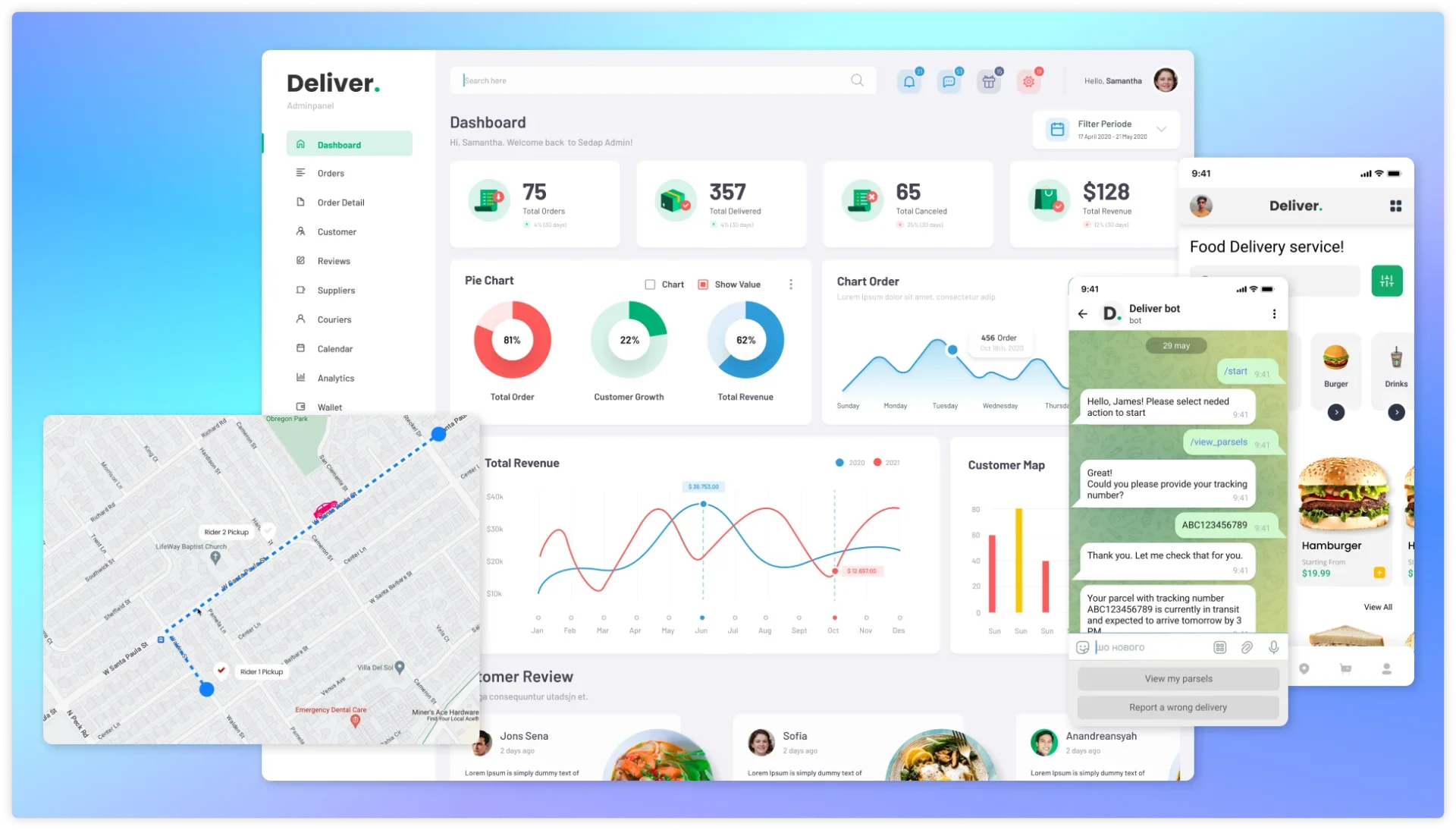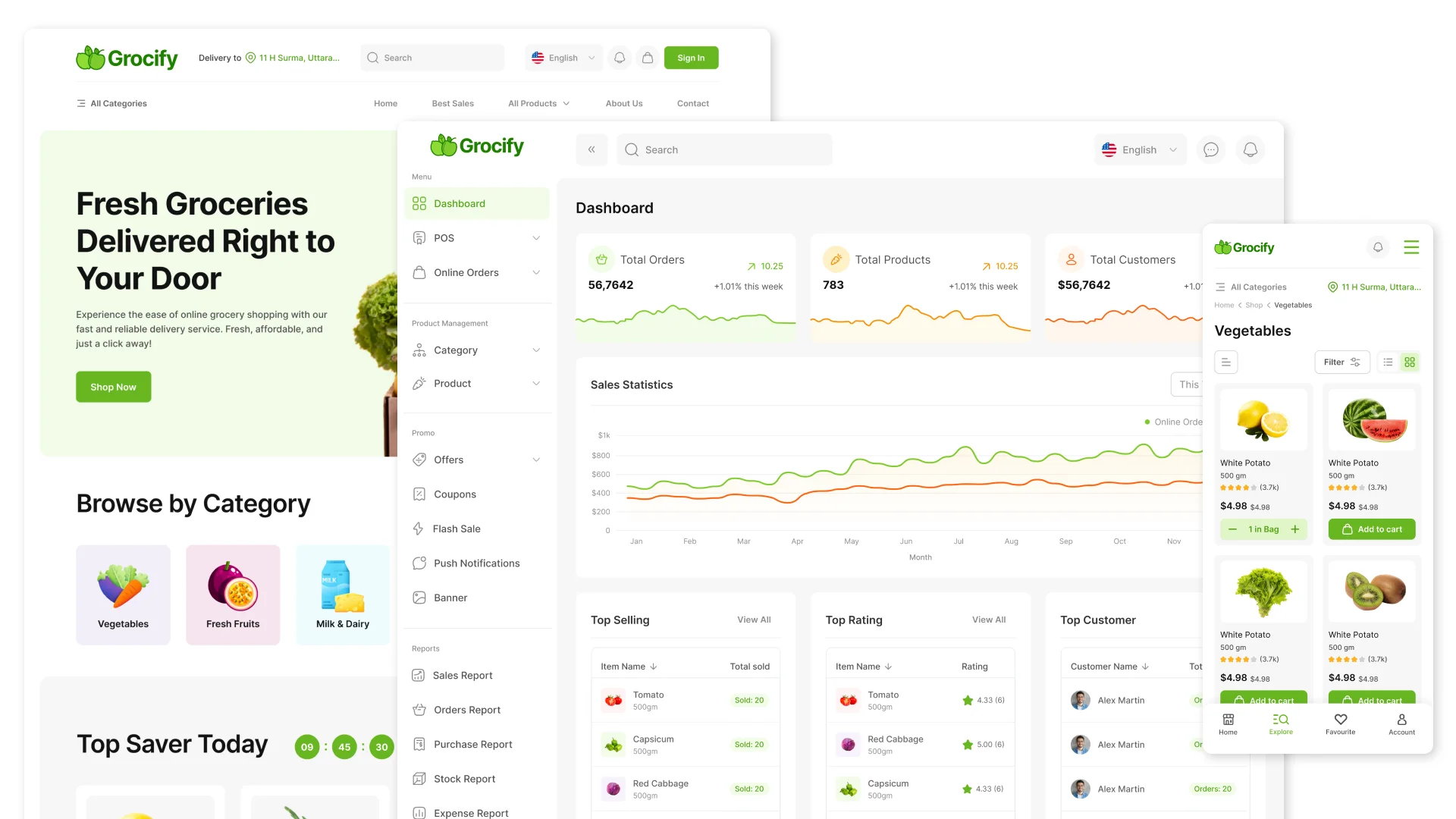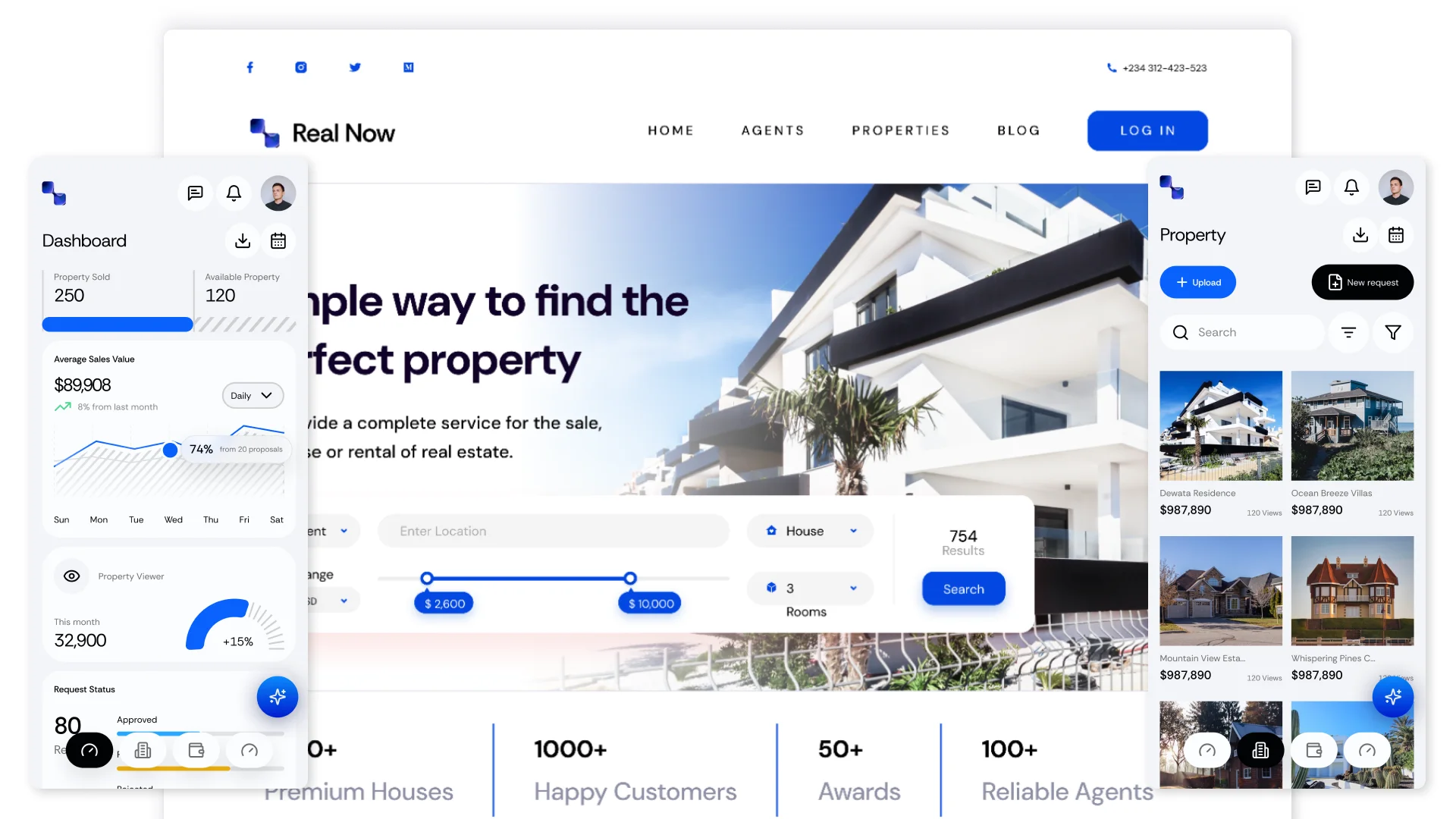
The full potential of an individual management system is revealed not only by its multifunctionality, but also by the integration of the CRM system with 1C (BAS), website, telephony, logistics, analytics and other internal and external systems. It is not enough to simply implement CRM – it is important to build it into the enterprise ecosystem as a central link in the automation chain.
AVADA MEDIA helps businesses reach a new level of management by setting up individual, custom integrations of CRM systems taking into account the peculiarities of business processes, work logic and visual interface. If you have already implemented CRM or are just planning to do so – it is time to think about how to connect it with other elements of the business. Integration of the CRM system is not just convenience, it is your competitiveness today and tomorrow.
Comprehensive integration with CRM is the foundation of digital transformation: from eliminating manual errors to accelerating the work of all departments. And the larger the company, the more critical the issue of interconnection between systems becomes.
When a business operates online, the integration of the website, CRM and analytics helps to track the behavior of the client from the first click to payment. Imagine: a client left a request on the website, and within a second a card with his data was created in the management system, the manager received a message, IP telephony recorded the call, and analytics recorded the source of the lead.
If the integration of the website with CRM is configured, the process is fully automated, that is, everything happens without a single click from the staff. This is how a business works, in which technologies automate routine and free up resources for growth.
Integration with CRM is not a bonus, but a necessity for a modern, flexible and scalable business architecture. Many companies implement a modern management system, but continue to use dozens of disparate services, and quickly encounter a number of limitations.
Disjointed digital tools create information noise, disorganize processes, and deprive businesses of flexibility. The larger the system, the greater the damage from fragmentation.
If the integration of the CRM system with services is not configured, then:
The inability to combine communication channels and key tools into a single system leads to chaos, errors, and loss of customers. In the long run, this is not just an inconvenience, but a factor that hinders business growth.
Connecting CRM to other systems eliminates gaps in processes and creates a continuous data processing chain. This approach is called end-to-end automation – when everything, from the first touch to the completion of the deal and re-contact, takes place within a single infrastructure.
Let’s look at an example of what integration with a CRM system is: a client placed an order on the website → the program automatically created a card → the warehouse received a message → accounting issued an invoice → the manager tracked the delivery status – the marketing department saw which channel the lead came from and what conversion it gave, not just the number of transitions. This level of synchronization makes processes transparent, predictable and easy to scale. The company works as a coordinated mechanism.
CRM integration with the surrounding digital infrastructure directly affects three key performance indicators:

Each business is a unique mechanism, with its own structure, sales channels and operational tasks. Therefore, we develop CRM integrations custom, focusing on real business processes, not universal templates.
Let’s consider the most popular areas that require deeply developed and stable connections:
Synchronization makes the management system an extension of your website. Without it, the manager may not notice the application, enter the contact incorrectly or simply be late with the first call.
CRM system integration with the website allows you to:
If the company uses CRM, integration with the website will help increase sales and reduce the cost of customer acquisition. As a result, the business receives not just a lead, but an accurate, contextual profile of the customer – from the first visit to payment.
Integration of IP telephony with CRM allows you to track call history, evaluate the work of managers and quickly find the necessary information:
Integration of IP telephony into CRM is critical for sales departments, call centers, service departments and any companies with active customer support.
Integration of messengers with CRM allows managers to correspond with customers directly from the system, see the full history of interaction and respond to requests in a timely manner. CRM integration with Whatsapp and Telegram allows:
Given that customers often prefer to write than call, CRM integration with messengers WhatsApp, Telegram, Viber is of great importance.
CRM integration with social networks makes it possible to connect Instagram, Facebook and other platforms as full-fledged sales and communication channels for:
For example, CRM integration with Instagram allows you to collect requests from Direct, comments and forms from Stories, generate leads and work with them centrally.
CRM integration with contacts from social networks and messengers helps to segment the customer base, build personalized sales funnels and increase audience loyalty.
CRM integration with Instagram store
CRM integration with logistics is especially important for eCommerce and B2C companies. Without it, managers waste time on manual processing of invoices, copying addresses and track codes.
With integration, the business works quickly, accurately and without failures, even with a large flow of orders. The program automatically generates a TTN based on the order data, sends it to the client and updates the delivery status. The client does not need to log in to postal and courier services – he automatically receives a parcel number and status notification.
In addition, automation of logistics scenarios is possible – for example, in case of a shortage of goods, the program can offer a replacement or redirect the order to another warehouse. This reduces the likelihood of errors, speeds up delivery and increases customer loyalty.
CRM with payment integration turns into a powerful management accounting tool, where you can see sales dynamics, track unpaid orders, calculate LTV, the share of prepayments and returns.
You can directly connect the system to LiqPay, Portmone, Stripe, Fondy, etc. After payment, the program will automatically update the status of the transaction, notify the manager and the client. As a result, you will receive fast payment processing, full compliance with legislation and minimal probability of errors.
Without analytics, business literally works blindly. Google Analytics integration with CRM (Facebook Pixel, advertising cabinets and BI systems) provides:
Such management system integrations are especially important for online stores, agencies, B2B sales and those who invest in digital advertising.
We integrate management systems with any services that are already used in your company, with full synchronization logic setup:
For companies that keep records in BAS, M.E.Doc or 1C accounting systems, CRM integration helps to avoid data duplication and automates document flow. Accounting programs count money, CRM helps to earn it, and together they create a full-fledged ecosystem where all processes are interconnected – from the first contact with the client to closing the deal and reflection in accounting reports. And for this connection to work without manual levers, competent integration is required. This is especially relevant for medium and large businesses, where it is important to adhere to financial discipline and regulations.
CRM and 1C or BAS integration is the process of establishing a two-way connection between these two powerful platforms. Technically, it is implemented via API, XML/JSON file exchange, or using specialized connectors, depending on your business tasks and the version of the accounting program.
Each integration is built for specific processes. Let’s see what tasks the integration of the management system with accounting software covers.
Without integration, the CRM system and 1C can display different information – for example, the product balances have already changed, and the manager is still selling a product that is no longer in stock. With synchronization, the data is updated instantly: management sees fresh reports, the sales department – current balances and payments, and accounting – actual financial movements. A single database eliminates duplication of information and ensures the relevance of data in both CRM and 1C.
Connecting CRM to 1C allows sales managers to always keep a close eye on transactions, and accounting departments to promptly keep records. Data on new orders, their statuses, composition and amounts are automatically transferred from CRM to 1C for invoicing, generating shipping documents and accounting for income. Information on payments and order fulfillment statuses is sent back to the management system.
If integration is configured, 1C CRM can synchronize document flow: invoices, certificates of work performed, payment orders and other financial documents are loaded into invoices automatically directly from the management system interface. The manager does not need to switch between systems or fill them out again.
In an individual CRM, you can implement unique integration scenarios that will take into account the specifics of a particular business process. For example, automatic transfer of return data, generation of analytical reports based on combined data, notifications of key events and much more.
All data interacts seamlessly, without manual transfer, and therefore without the risk of errors. This is not just data exchange, but building a single digital logic, where CRM and 1C complement each other.

CRM integration is a serious technological process. If you approach it formally or in a formulaic way, you may encounter unpleasant consequences.
Conflicts and data loss
When data is updated simultaneously in CRM, 1C and other external systems (or on the website), without a clear logic of priorities, data may be lost, duplicates or inconsistent statuses may appear. This threatens with errors in calculations, inventory balances, analytics. All this affects the client experience and internal reporting.
Insufficient data protection
Implementing data exchange between 1C and CPM via old protocols, without encryption or without access rights control, you can create vulnerabilities that cause data leakage.
Too narrow integration scenario
Often, typical modules link only basic objects (customers, orders), leaving important custom fields, specific processes or embedded data behind. As a result, users have to do some of the work manually.
Reduced productivity
Improperly configured data exchange – for example, too frequent synchronization of large amounts of data between CPM and 1C can overload servers, slowing down the operation of both systems.
Lack of scalability
If the possibility of scaling is not built in, then as the business grows – the emergence of new branches, new processes, additional accounting systems – it will be necessary to actually redo it from scratch.
The AVADA MEDIA development team connects CRM to the website, messengers and accounting programs not in a template way, but in a project way: analyzing all business processes, taking into account the volume of data and user needs, choosing the right connection method and building in scalability capabilities.
We create custom integrations for specific business tasks, and do not adjust the business to a standard module. Only in this way does CRM truly become a process management center, and not another closed system.
When it comes to integrating CRM systems, many people look towards ready-made CRM systems. However, it should be borne in mind that every integration with a CRM system in a “box” is always a compromise.
Ready-made CRMs with 1C integration are capable of only basic integrations designed for average processes. As soon as you want to go beyond the standard scheme – for example, custom fields, specific statuses of agreements, special conditions of work with counterparties, such solutions begin to break or require complex workarounds.
An individually developed CRM allows you to build integration not around platform limitations, but under real business processes. This means that you can:
This approach eliminates gaps between departments, speeds up data processing and reduces manual entry. Our team develops a CRM that “knows” your accounting system.

If you need integration with CRM, you can order such a service from AVADA MEDIA. Our specialists will develop for you your own unique management system without unnecessary functionality, without compromises, without “everyone does it like that”. You will receive seamless and secure data exchange between your systems and open up new opportunities for the growth and development of your business.
We see CRM integration as part of an automation strategy, not just connecting two programs. Therefore, we design a program for your business so that it grows with your business, not slows it down.
The AVADA MEDIA team has deep expertise in developing custom CRM systems and integrating with various internal and external systems. We use modern APIs and data exchange protocols to ensure stability, security and high speed of information transfer.
How much does it cost to integrate a CRM system with other programs?
The price of setting up data exchange with CRM depends on the complexity of business processes, the volume of data and the degree of customization of the management system. To calculate the cost of integrating CRM systems, we conduct an audit of tasks and draw up a personal commercial offer.
Is it possible to integrate CRM with several 1C configurations at the same time?
If you use several 1C configurations, CRM integration with services can be configured in such a way as to exchange data with each of them through separate channels or a common middleware. It is important to provide the logic of data priority and synchronization so that the information remains consistent and up-to-date in all systems.
If each department uses its own program, can they all be integrated with CRM?
We can build multi-point integration with data routing, in which each department receives only the necessary information in the required form. CRM becomes the control center and the only source of information.
How long does CPM integration with 1C take?
The timing depends on the complexity of business processes, the volume of data and the level of customization. The more processes and data need to be linked, the more time it will take.
Is 1C and CRM integration safe for confidential data?
Data security directly depends on the chosen integration method and system settings. With proper implementation, secure transmission channels, access rights control and advanced protection mechanisms are used.
Which method of CRM and 1C integration is better?
The optimal choice depends on the architecture of your CRM and the version of 1C used. But the most reliable are integrations via APIs, which provide centralized data exchange with the possibility of flexible configuration and scaling.
If the service does not have an open API, is CRM integration impossible?
Not always. Of course, the presence of an API simplifies the task. But even if it is not there, we can implement data exchange via webhooks, file synchronization, e-mail parsing, browser extensions or even develop our own intermediate gateway. It all depends on your tasks and infrastructure.
Will I need to update the integration when changing the 1C version?
When updating 1C, CRM integration may require adaptation, especially if the data structure, API mechanisms, or configuration objects have changed in the new version. To minimize risks, we build a compatibility margin into the project and provide for the possibility of flexible reconfiguration.
Our works
Contact the experts Have a question?
Developed by AVADA-MEDIA™
The user, filling out an application on the website https://avada-media.ua/ (hereinafter referred to as the Site), agrees to the terms of this Consent for the processing of personal data (hereinafter referred to as the Consent) in accordance with the Law of Ukraine “On the collection of personal data”. Acceptance of the offer of the Consent is the sending of an application from the Site or an order from the Operator by telephone of the Site.
The user gives his consent to the processing of his personal data with the following conditions:
1. This Consent is given to the processing of personal data both without and using automation tools.
2. Consent applies to the following information: name, phone, email.
3. Consent to the processing of personal data is given in order to provide the User with an answer to the application, further conclude and fulfill obligations under the contracts, provide customer support, inform about services that, in the opinion of the Operator, may be of interest to the User, conduct surveys and market research.
4. The User grants the Operator the right to carry out the following actions (operations) with personal data: collection, recording, systematization, accumulation, storage, clarification (updating, changing), use, depersonalization, blocking, deletion and destruction, transfer to third parties, with the consent of the subject of personal data and compliance with measures to protect personal data from unauthorized access.
5. Personal data is processed by the Operator until all necessary procedures are completed. Also, processing can be stopped at the request of the User by e-mail: info@avada-media.com.ua
6. The User confirms that by giving Consent, he acts freely, by his will and in his interest.
7. This Consent is valid indefinitely until the termination of the processing of personal data for the reasons specified in clause 5 of this document.
Send CV
Contact us in any convenient way for you:
+ 38 (097) 036 29 32